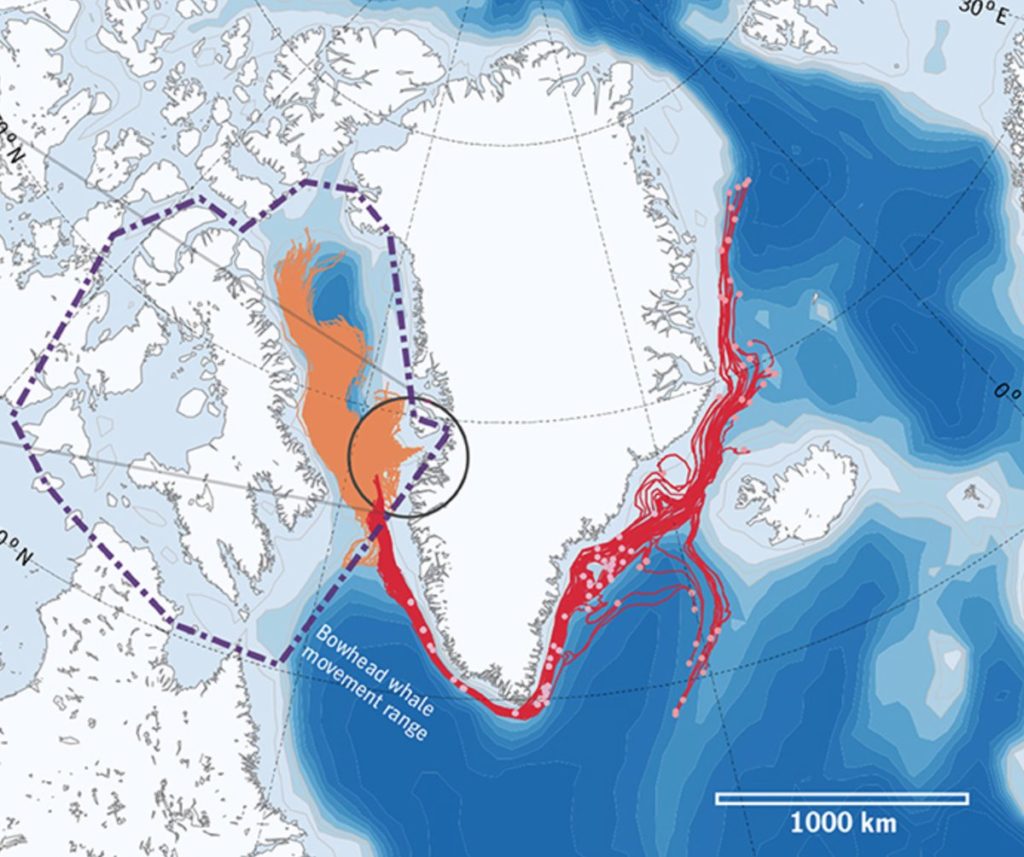Disko Bay, West Greenland is at the end of oceanic “rivers” of Calanus copepods (red/orange lines below) that enter the bay in winter, still in diapause. They form a really dense, deep layer, and bowhead whales come from a wide area (purple) to eat them. So how much of the Calanus standing stock do the whales eat?

We combined behavioural data, abundance data, and bioenergetics estimates using a simple model, and found that the answer is: roughly half! That is a big, under-considered short-circuit across the size spectrum, from 2 mm zooplankton to the largest Arctic marine mammal.
This raises questions about “trophic teleconnections”—how the footprint of a top predator in primary production might be 1) very big and 2) far offset from visible grazing hotspots, even in a short food chain. We review the literature on Arctic foraging hotspots and suggest that this teleconnection pattern might be the rule and not the exception at high latitudes.
- Banas NS, Møller EF, Laidre KL, Simon M, Ellingsen IH, Nielsen TG (2021) Reconciling behavioral, bioenergetic, and oceanographic views of bowhead whale predation on overwintering copepods at an Arctic hotspot (Disko Bay, Greenland). Front Mar Sci, 10.3389/fmars.2021.614582.
